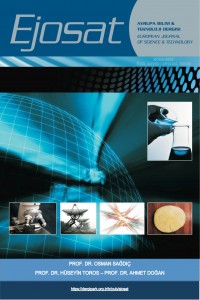Abstract
Hologram that we encounter in many different areas today has managed to attract the attention of few of us, opens the doors of many technological facilities. It has a three-dimensional appearance, is a kind of mixture of laser beams and is used in many areas from the printing publication to the physics world. Hologram, which is a method developed for security purposes is the expression of a product or object through laser beams. It is a technology that is expanding more and more and it is a three-dimensional painting technique that we encounter in many places in everyday life and industry branches. In this project, a glass material in the form of a holographic pyramid which can be placed on the smartphone or tablet, is used. It is aimed to establish a communication model with the client server architecture and reflect the image to the other person simultaneously. These types of images work by positioning the edges on the pyramid on the glass fortyfive degrees. The application has been tested in various screen resolutions and dpi settings, and no problem has been encountered in scaling. While the application runs in server mode or client mode, it does not negatively affect device performance. There is no loss of quality in the transferred image. However, since compression is not compromised in quality, the number of frames per second is low. The pictures are converted to base64 format between the client and the result. Although the image seems to float around the center of the pyramid in the traditional holographic pyramid, the image itself is two-dimensional. A three dimensional image is obtained with the application. Thus, a good sense of reality is gained. The advanced framework can be applied extensively in different fields like video communication, military education, medical education, museum exhibition, store exhibition and theme park attractions.
Keywords
References
- Gabor, D. (1972). Holography, 1948-1971. Science, 177(4046), 299-313.
- Greenslade Jr, T. B. (2011). Pepper's Ghost. The Physics Teacher, 49(6), 338-339.
- Nakashima, F., Kawazoe, N., Emmei, S., Mizutani, Y., Hattori, H., Kadowaki, S., & Suzuki, K. (2000). U.S. Patent No. 6,141,123. Washington, DC: U.S. Patent and Trademark Office.
- Yao, A., Cai, D., Hu, P., Wang, S., Sha, L., & Chen, Y. (2016, October). HoloNet: towards robust emotion recognition in the wild. In Proceedings of the 18th ACM International Conference on Multimodal Interaction (pp. 472-478).
- Jones, A., McDowall, I., Yamada, H., Bolas, M., & Debevec, P. (2007). Rendering for an interactive 360 light field display. In ACM SIGGRAPH 2007 papers (pp. 40-es).
- Ishikawa, T., & Gitzinger, T. (2011). U.S. Patent No. 8,054,391. Washington, DC: U.S. Patent and Trademark Office.
- DiMarzio, J. F. (2008). Android. Tata McGraw-Hill Education.
- Raffy, P., & Yassa, F. (2006). U.S. Patent No. 7,002,627. Washington, DC: U.S. Patent and Trademark Office.
- Josefsson, S. (2006). The base16, base32, and base64 data encodings (pp. 1-18). RFC 4648, October.
Abstract
Hologram teknolojisi günümüzde birçok değişik alanda kullanılmaktır ve uygulamalarda kolaylıklar sağlamaktadır. Lazer ışınlarının karışımı ile oluşan hologramlar üç boyutlu bir görünüme sahiptir. Fen bilimlerinden medyaya kadar çok geniş alanlarda denenmektedirler. Çoğunlukla güvenlik amaçlı sektörlerde işlenen hologramlar, bir objenin lazerle gösterilmesidir. Günden güne yaygınlaşan bir teknolojisiyle, normal hayat düzeninde ve sanayide karşımıza çokça çıkabilecek üç boyutlu modellemedir. Bu projede akıllı telefonun veya tabletin üzerine yerleştirilebilen holografik piramit şeklinde cam bir materyal kullanılmıştır. İstemci sunucu mimarisiyle bir iletişim modeli kurulup görüntünün eş zamanlı olarak karşıdaki kişiye yansıtılması amaçlanmıştır. Bu tür görüntüler, camın üzerindeki piramit üzerindeki kenarların kırkbeş derece konumlandırılması ile çalışmaktadır. Uygulama sçeşitli ekran çözünürlükleri ve dpi ayarlarında test edilmiş, ölçeklendirme konusunda herhangi bir sorun yaşanmamıştır. Uygulama sunucu modunda yâda istemci modunda çalışırken cihaz performansını olumsuz etkilememiştir. Aktarılan görüntüde kalite kaybı görülmemiştir. Ancak sıkıştırma işlemlerinde kaliteden ödün verilmediği için saniyedeki kare sayısında düşüklük yaşanmaktadır. İstemci ile sonucu arasında resimler base64 formatına çevirilerek iletilmektedir. Hernekadar görüntü geleneksel holografik piramitte piramidin merkezi etrafında yüzüyor gibi görünse de, görüntünün kendisi üç boyutlu değil iki boyutludur. Yapılan uygulama ile 3D görüntü elde edilmiştir. Böylece iyi bir gerçeklik duygusu kazanılmıştır. Önerilen sistem görüntülü iletişim, askeri eğitim, tıbbi eğitim, müze sergisi, mağaza sergisi ve temapark cazibe merkezleri gibi çeşitli alanlarda yaygın olarak uygulanabilir.
Keywords
References
- Gabor, D. (1972). Holography, 1948-1971. Science, 177(4046), 299-313.
- Greenslade Jr, T. B. (2011). Pepper's Ghost. The Physics Teacher, 49(6), 338-339.
- Nakashima, F., Kawazoe, N., Emmei, S., Mizutani, Y., Hattori, H., Kadowaki, S., & Suzuki, K. (2000). U.S. Patent No. 6,141,123. Washington, DC: U.S. Patent and Trademark Office.
- Yao, A., Cai, D., Hu, P., Wang, S., Sha, L., & Chen, Y. (2016, October). HoloNet: towards robust emotion recognition in the wild. In Proceedings of the 18th ACM International Conference on Multimodal Interaction (pp. 472-478).
- Jones, A., McDowall, I., Yamada, H., Bolas, M., & Debevec, P. (2007). Rendering for an interactive 360 light field display. In ACM SIGGRAPH 2007 papers (pp. 40-es).
- Ishikawa, T., & Gitzinger, T. (2011). U.S. Patent No. 8,054,391. Washington, DC: U.S. Patent and Trademark Office.
- DiMarzio, J. F. (2008). Android. Tata McGraw-Hill Education.
- Raffy, P., & Yassa, F. (2006). U.S. Patent No. 7,002,627. Washington, DC: U.S. Patent and Trademark Office.
- Josefsson, S. (2006). The base16, base32, and base64 data encodings (pp. 1-18). RFC 4648, October.
Details
| Primary Language | Turkish |
|---|---|
| Subjects | Engineering |
| Journal Section | Articles |
| Authors | |
| Publication Date | August 15, 2020 |
| Published in Issue | Year 2020 Ejosat Special Issue 2020 (HORA) |
